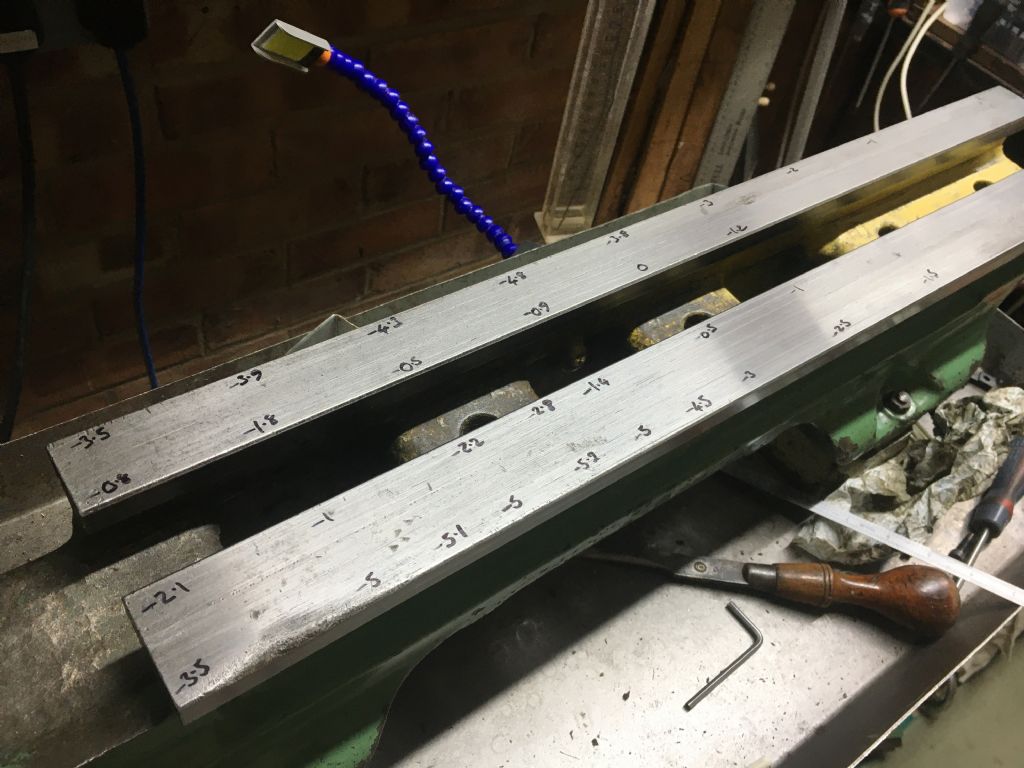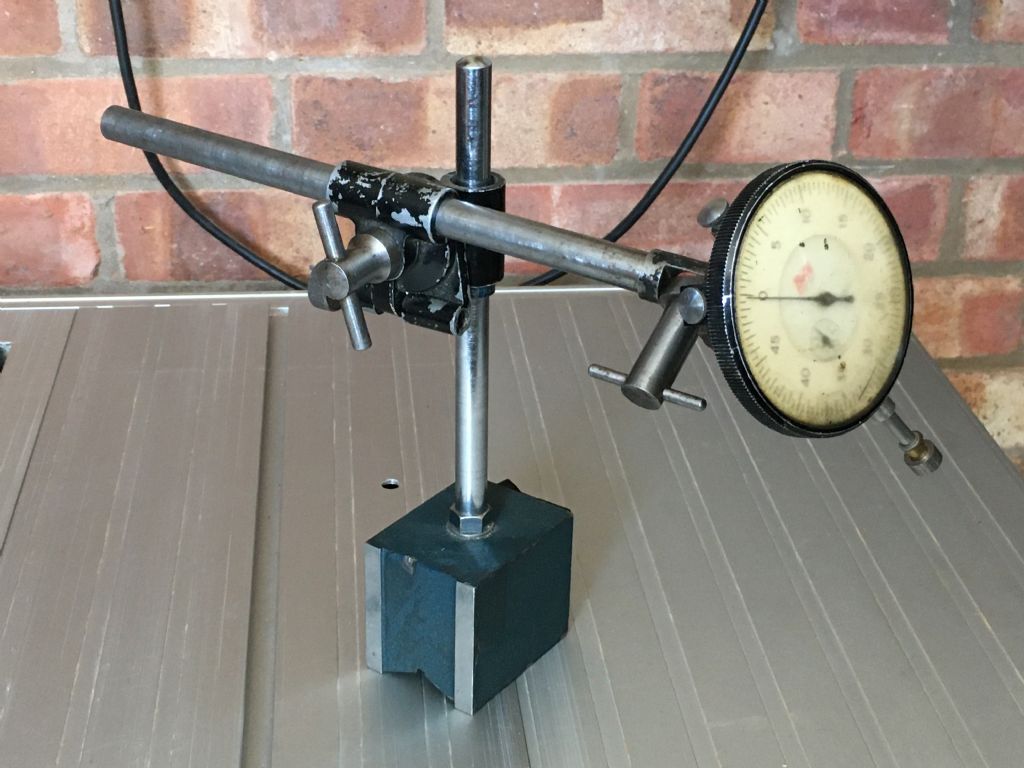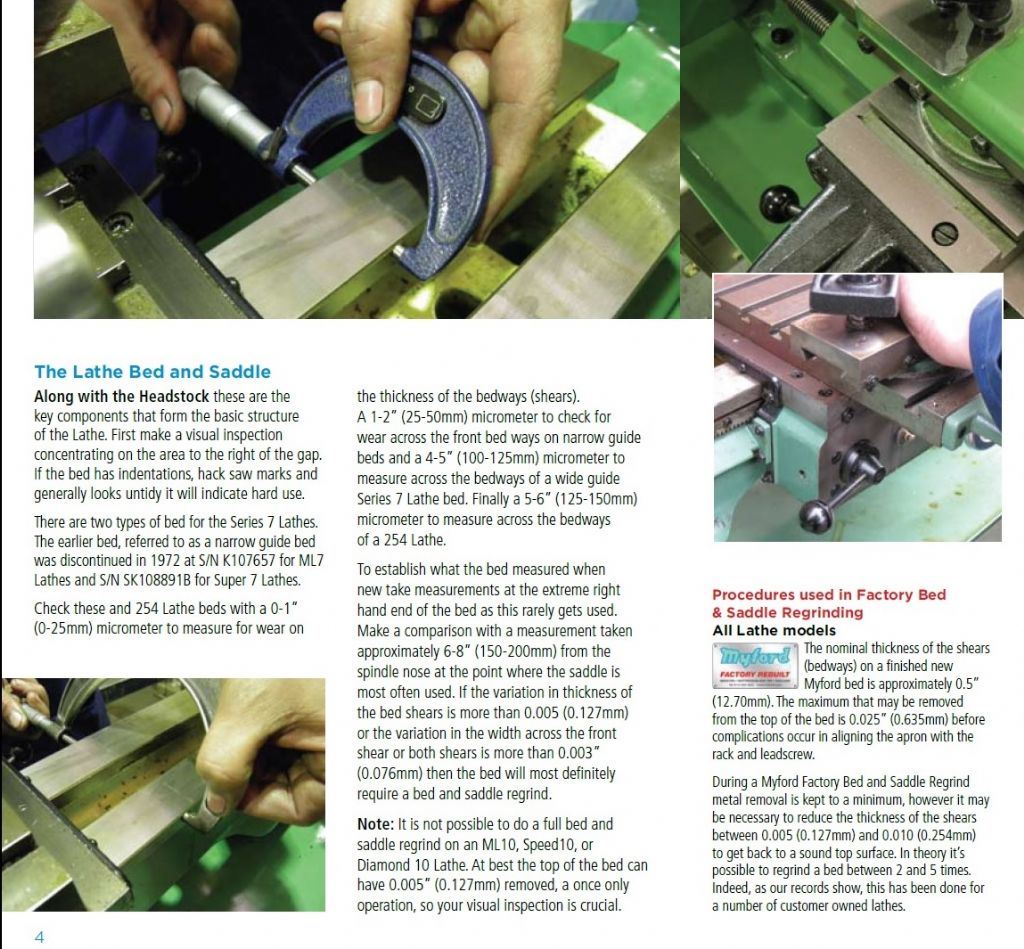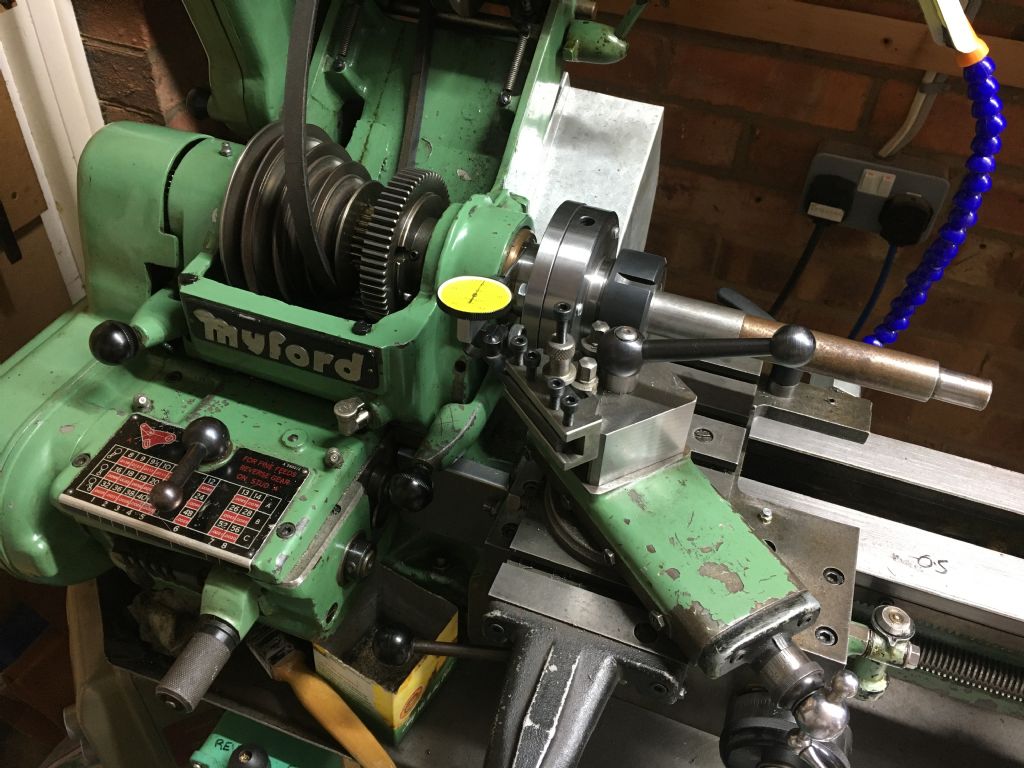Posted by Graham Meek on 30/05/2020 15:40:27:
Posted by Mike Donnerstag on 30/05/2020 13:21:45:
Measuring again, apart from the last 2 inches of the bed, the bed width across both shears shows no more than 1thou of wear (not bad at all!), according to my digital calipers (the only micrometer I have is 0-1&rdquo . This includes the visibly worn area on the top of the front shear. The final 2” measures 1.5-2thou above that, which accounts for my initial wear measurement of 3.5thou.
. This includes the visibly worn area on the top of the front shear. The final 2” measures 1.5-2thou above that, which accounts for my initial wear measurement of 3.5thou.
Hi Mike,
According to the above we are dealing with ONE Thou of wear generally across the bedways. This is the generating surface for parallel parts. With an additional maximum wear of FIVE and a bit Thou in the thickness of the bedways.
The FIVE Thou of wear extends the entire length of the front way, where you were turning your test piece, but at the same time the wear on the rear way is roughly FOUR Thou give or take Half a Thou. Thus the tool will drop only ONE and a bit Thou, which will increase the diameter by 0.000002". This is not the 0.0015" you mention at the beginning of the post.
Just for reference the tool will need to drop 0.027" in centre height to produce an increase in diameter of 0,0015". Plus this drop would need to be in the middle of the test piece, ("Barrel Shaped" , with a gradual slope before and after to give the same diameter at each end.
, with a gradual slope before and after to give the same diameter at each end.
The wear is as we have established fairly constant along the front edge, with no gradual 0.027" drop. Assuming that the Gib is adjusted correctly across the bedway then I am leaning towards the spindle adjustment. I do however think that the bed adjustments to get the two ends the same diameter originally may need revisiting, once the spindle has been checked out.
Regards
Gray,
The FIVE Thou of wear extends the entire length of the front way, where you were turning your test piece, but at the same time the wear on the rear way is roughly FOUR Thou give or take Half a Thou. Thus the tool will drop only ONE and a bit Thou, which will increase the diameter by 0.000002". This is not the 0.0015" you mention at the beginning of the post.
How can it just affect the tool hight.?
If you move the front way down by 1 thou you not only lower the tool hight but move it away from the work. The saddle must rotate about the rear way. If the tool tip was over the rear way the only movement would be horizontal by 1 thou out of the work. If the tool tip was over the centre of the front way 3.5 inches in front of the rear way and 3.5 inches above it it forms a square the back corner of whaich is fixed and the front has dropped by 1 thou, The tool tip must then rotate down by near enough one thou and out by one thou. (Just by similar triangles). The consequence is an increase in diameter of 2 thou.
I woud be perfectly happy for someone to tell me the flaw in this argument. It's no different that the way we level the bed anyway. If you lower the front foot at the tailstock end you move the tool away from the work.
Incidentally I think that the max wear on the bed is 0.0005" variation not 5thou. I think the 5 thou refers to the maximum amount you can take off the top of the bed before more regrinds are not possible. Myford used to mount the bed o the bedway grinder and pull the centre down by half a thou producing a bed with a hump of 0.0005" from new, with wear this goes through 'flat and eventually to 0.0005" hollow when it's time for a regrind.
I'm sure there are many people more expirienced on here than me so perhaps someone could explain why I'm wrong.
regards Martin
blowlamp.



 . This includes the visibly worn area on the top of the front shear. The final 2” measures 1.5-2thou above that, which accounts for my initial wear measurement of 3.5thou.
. This includes the visibly worn area on the top of the front shear. The final 2” measures 1.5-2thou above that, which accounts for my initial wear measurement of 3.5thou.




